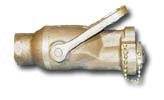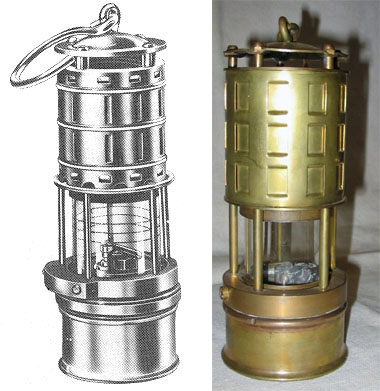 |
 |
 |
 |
| HOME |
| ABOUT US |
| PARTICIPATE |
| COLLECTIONS |
| DC EQUIPMENT MUSEUM |
| SHIP&SUBMARINE MUSEUM |
| WW II DAMAMGE REPORTS |
| SHIPBOARD CASUALTIES |
| DAMAGE CONTROL MUSEUM |
| DC EQUIPMENT Museum |
| Shoring, Pipe Patching, and Plugging |
| Metallic Pipe and General Purpose Damage Control Kit |
| he metallic pipe and general purpose damage control
kit contained materials that were used to repair water,
fuel and gas lines. It also contained other materials
that could be used to patch small cracks and ruptures in
flat metal surfaces, such as bulkheads, decks and
overheads. Most of these repairs were completed, with
the system restored to service, within 30 minutes. The complete kit contained the materials listed below. These materials may have been ordered individually whenever the need arose to replace those items in the kit. Basic information about some of the materials in the kit follows. Assembly I:
4 cans liquid resin, 400 grams each
4 cans liquid hardener, 100 grams each 1 piece woven roving cloth, 24 by 40 inches 1 piece void cover, 8 by 36 inches 1 piece polyvinyl chloride (PVC) film, 48 by 60 inches 1 chalk line, 1/8 pound 4 pairs of gloves 2 eyeshields 4 wooden spatulas 1 sheet abrasive cloth, 9 by 11 inches 1 scissors 1 instruction manual Assembly II:
4 cans paste resin, 300 grams each
4 cans paste hardener, 75 grams each 4 tongue depressors Resins and Hardeners The liquid and paste resins were of the epoxy type. The liquid and paste hardeners were chemical compounds used to harden the resins. These resins and the hardeners were packaged in pre-measured amounts. For the proper mixture and better results, all of the hardener in the smaller can was mixed with all of the resin in the larger can. When the resins and hardeners were mixed together, a chemical reaction began. This reaction was exothermic, meaning heat was given off. For approximately 12 to 17 minutes the temperature increased gradually until it reached 120° to 135°F. At this temperature, a sudden, sharp increase in temperature -- known as kick-over -- occurred until it reached its peak at about 350°F. At this peak temperature the mixture began to solidify, changing in color from gray to light brown. The mixture cooled slowly because of the poor thermal conductivity of the materials. After the kick-over, the mixture continued to harden and increase in strength, a process known as curing. Approximately 30 minutes after kick-over, the patch was strong, hard and cool enough to use. Pressure was not restored to the system until the patch has cured, or when a bare hand could be placed on it without discomfort from heat. Several factors contributed to the control of kick-over. The most important was the temperature. Both the initial temperature of the activated resin mixture and the temperature of the atmosphere affected the kick-over time. The initial temperature had the greater effect. When the temperature of the resin and the hardener prior to mixing increased, the kick-over time decreased; when those temperatures were decreased, the kick-over time increased. The time of the kick-over could be predicted and controlled within certain limits. If the resin temperature at the time of mixing was known, the amount of time available to apply the patch before kick-over occurred could be determined. When the resin temperature was 80°F, the kick-over occurred in less time than if the resin temperature was 60°F. The difference in resin temperatures meant that there were only 9 minutes versus 18 minutes to apply the patch. It was necessary to have the patch completely applied before the kick-over occurred. Void Covers The void cover was a resin-treated glass cloth that could be cut and formed to cover the damaged area. It was rigid enough to give support to the patch. Woven Roving Cloth The woven roving cloth was made of a short staple glass fiber woven into a thick fluffy cloth. This cloth was coated with the resin-hardener mixture and either wrapped around or placed over the damaged area. The glass cloth provided the main strength of the patch and a means of applying the resin-hardener mixture. PVC Film The plastic film was a thin, transparent, polyvinyl chloride (PVC) material that was used as a separating film for the flat patch. Its purpose was to prevent the patch from sticking to the back-up plate or other supports. In the pipe patch it was used to cover the entire patch and keep the activated resin around the patch. Kraft wrapping paper was used as a substitute when necessary. |
| For more information, see the Index. |